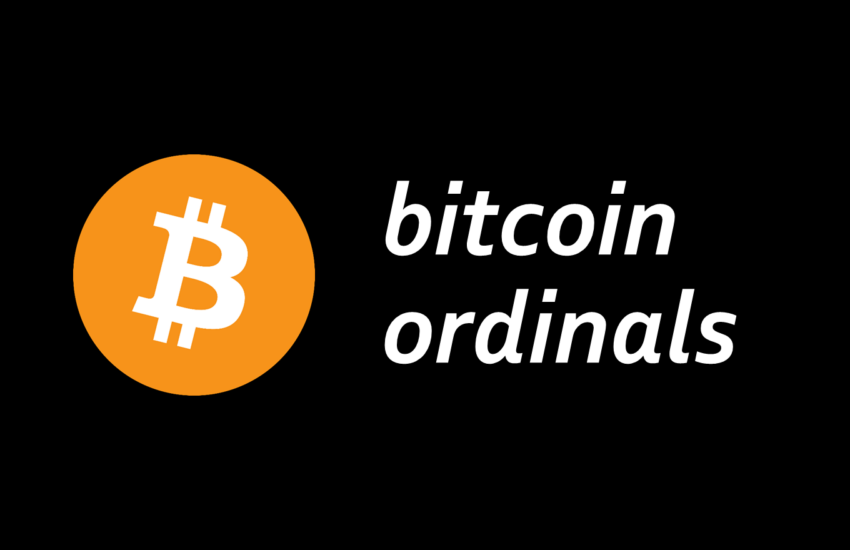Welcome to our Bitcoin ordinals guide where you’ll learn everything you need to know to create your own NFTs using the Ordinals protocol.
What are Bitcoin ordinals?
On Ethereum and other blockchains, we use smart contract standards such as ERC-721 to create NFTs. However, since Bitcoin does not support smart contracts, we have to use another approach to create Bitcoin NFTs.
This is where Bitcoin ordinals come into play. Bitcoin ordinals are transforming individual satoshis (the smallest units of the Bitcoin cryptocurrency) into NFTs by numbering them and inscribing them with additional data like images.
What’s great about ordinals is that they don’t need any changes to the Bitcoin protocol. There is no need for a Layer 2 chain or a sidechain either. Ordinals just work with the normal Bitcoin blockchain as it is. This makes them Bitcoin-native digital artifacts which are as decentralized and immutable as Bitcoin itself.
For Bitcoin NFTs we need two things:
- Ordinal theory – A way of identifying and tracking individual satoshis
- Inscription – A way of attaching metadata like images to individual satoshis
We will cover both further down in this article.
Where do Bitcoin ordinals come from?
Software developer and Bitcoin enthusiast Casey Rodarmor invented the Bitcoin ordinal theory in 2022. Casey is a UC Berkeley graduate who developed the ordinal theory to create a “better” (more native, more immutable) NFT version than the usual ERC-721-based NFTs of Ethereum.
Casey created the first ordinals-based Bitcoin NFT on December 14, 2022, using pixel art of a black and white skull.

How big are Bitcoin ordinals today?
According to the analytics platform Dune, at the time of writing, there are 34,970,186 Bitcoin ordinal inscriptions. That’s quite a volume within less than one year.
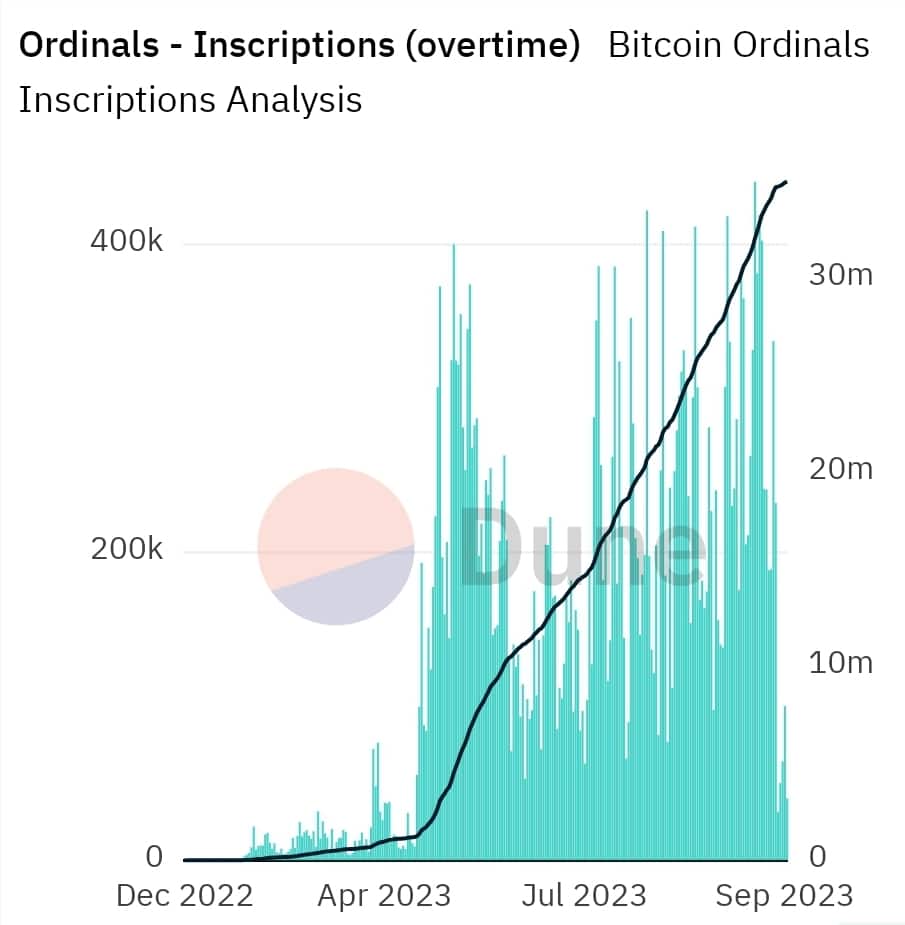
How much does it cost to create a Bitcoin NFT?
Blockchain space is a scarce resource. Hence, the larger the image you want to use for your NFT, the higher the transaction fees you have to pay. For example, for a dummy image that is just plain white (and therefore of minimal size), you spend on the Gamma platform 12,110 SATS which is $3.38 at the time of writing. This seems to be the minimum price for a Bitcoin NFT.
For a simple sketch of a woman’s face as we use it in our step-by-step guide further down in this article we have to pay 53,326 SATS which currently equals $14.91.
What is the ordinals theory?
Not bitcoins, but satoshis, are the smallest currency unit of the Bitcoin blockchain: One bitcoin consists of 100 million satoshis. And because the Bitcoin blockchain has a maximum supply of 21 million bitcoins (this maximum supply will be reached around the year 2140), the supply of satoshis will be 2.1 quadrillion.
By design, satoshis are fungible, meaning they are all identical. They all hold the same value and are interchangeable. The Bitcoin protocol does not foresee any identifiers for satoshis. This is where the Ordinals protocol comes into play. The Ordinals protocol introduces a method to assign identifiers to individual satoshis and track them across transactions. We achieve this as follows:
When new blocks are mined and new satoshis are created as rewards for miners, the Ordinals protocol assigns newly created satoshis unique numbers in the order in which they’re created. I.e., the first ever created satoshi in the first block (the genesis block on January 3, 2009) is assigned the ordinal number 0, the second created satoshi gets the ordinal number 1, the last satoshi of the first block has the ordinal number 4,999,999,999, and so on.
As Bitcoin transactions take place, these individual, numbered satoshis are transferred from transaction inputs to transaction outputs in first-in-first-out order. I.e., the first satoshi of the transaction input is assigned to the first slot of the transaction output, the second satoshi of the transaction input is assigned to the second slot of the transaction output, and so on. This way, we are able to track individual satoshis from their minting event through their whole lifespan of transactions.
Be aware that the ordinals theory is not about changing the existing Bitcoin blockchain. It is rather about looking at the Bitcoin blockchain with kind of ordinals glasses that add imaginary numbers to satoshis.
What is inscription?
Inscription is the process of inscribing numbered satoshis with arbitrary digital content (e.g., images, text, music, videos) by writing content into Bitcoin transactions. The result are Bitcoin-native digital artifacts (more commonly called NFTs) stored directly on-chain.
The content structure for inscriptions aligns with the usual web approach: It includes the content type, often referred to as MIME type, and the content itself, represented as a byte string. This arrangement allows inscription content to be served by standard web servers and viewed in normal web browsers.
What are the risks with Bitcoin ordinals?
As with all other protocols, the risks with the Ordinals protocol are manifold.
One risk specific to Bitcoin ordinals comes from the fact that the protocol “misuses” satoshis by attaching digital artworks to them, which was never the intention of the Bitcoin protocol. For the Bitcoin protocol, all satoshis are equal and have no meaning beyond being a currency for payments.
This means that when you make a Bitcoin payment you are running the risk that by accident you are paying with satoshis that have digital artworks attached to them and you lose your NFTs.
To mitigate this risk, Bitcoin NFT collectors should always use ordinals-compatible wallets like Xverse, Unisat, or Leather (formerly Hiro) which are able to distinguish between “normal” and inscribed satoshis.
Step-by-step guide to creating a Bitcoin NFT
Creating a Bitcoin NFT can be a complicated and time-consuming task when following the Ordinal Inscription Guide. It requires users to undertake several technical procedures such as setting up their own Bitcoin full node.
However, for the purpose of this guide, we will opt for an easier approach using Gamma, an NFT launchpad and marketplace that allows artists to create and sell their digital artworks with just a few clicks and without any coding.
Step 1 – First, create a digital piece of art you want to use for your NFT. For this example, I have created the following sketch using the Procreate app on my iPad with the Apple Pencil. (If you like it, you might wanna have a look at my collection of sketches on Instagram.)

Step 2 – Next, set up your ordinals-compatible Bitcoin wallet. You will need the wallet to receive, hold, and transfer your Bitcoin NFTs. Let’s set up an Xverse wallet for this exercise.
Step 3 – Now, it’s time to open the NFT launchpad gamma.io.
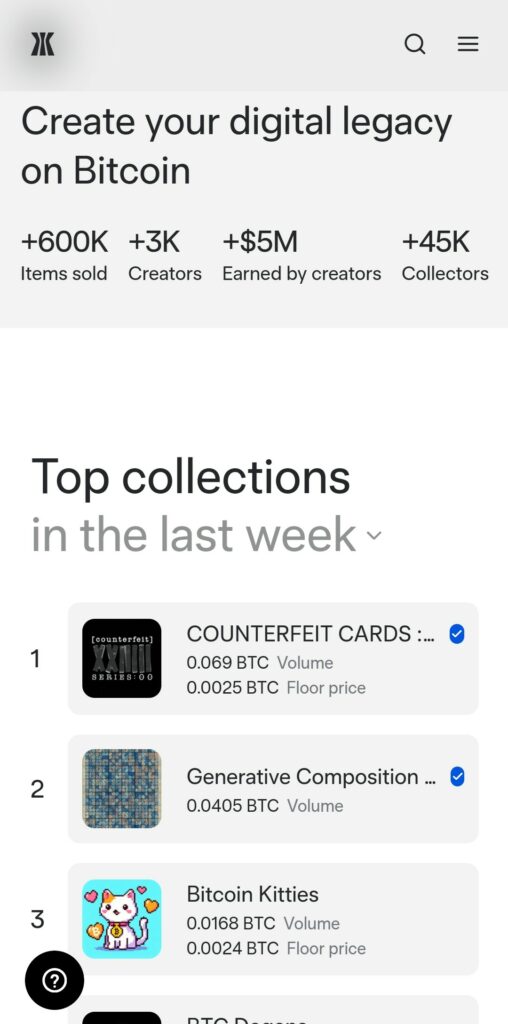
Step 4 – Via the hamburger symbol on the top right corner, click Create to start the NFT creation process.
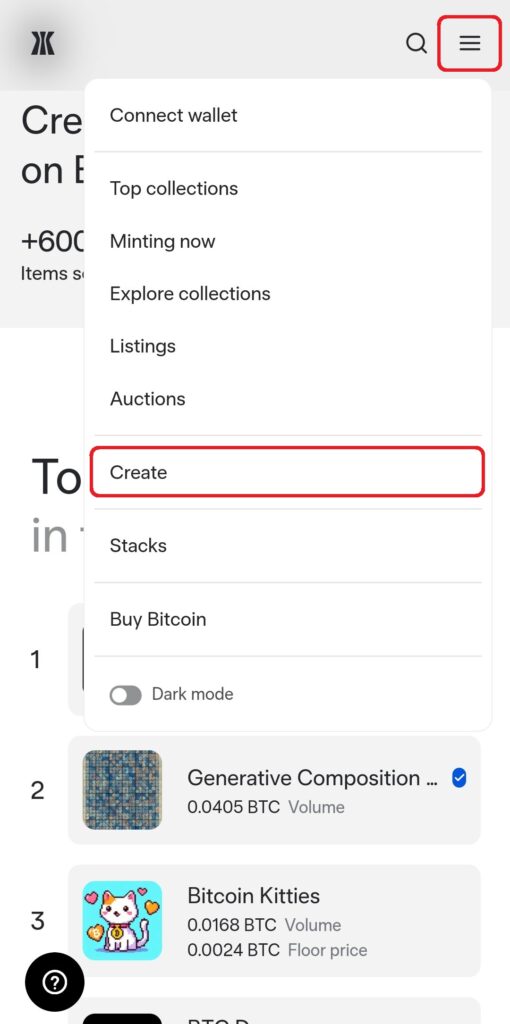
Step 5 – Select Create single inscription for myself.
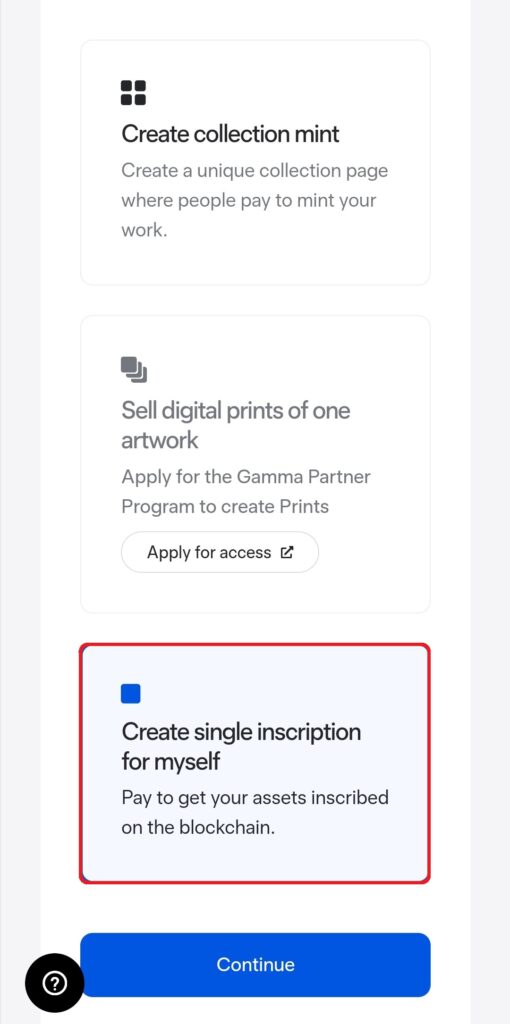
Step 6 – Next, select your inscription type. Let’s create a single image here.
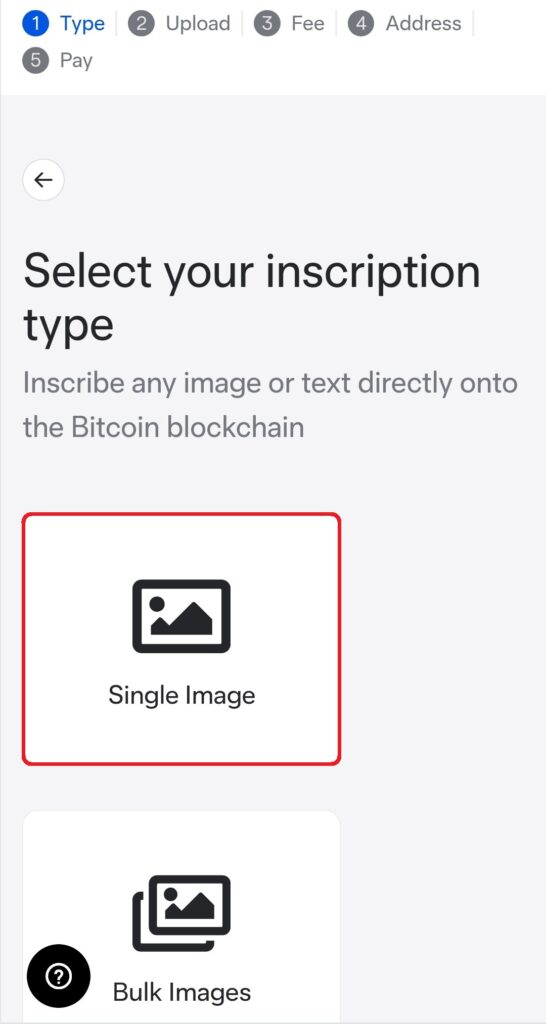
Step 7 – Upload the image you have created in step 1 and click Continue.
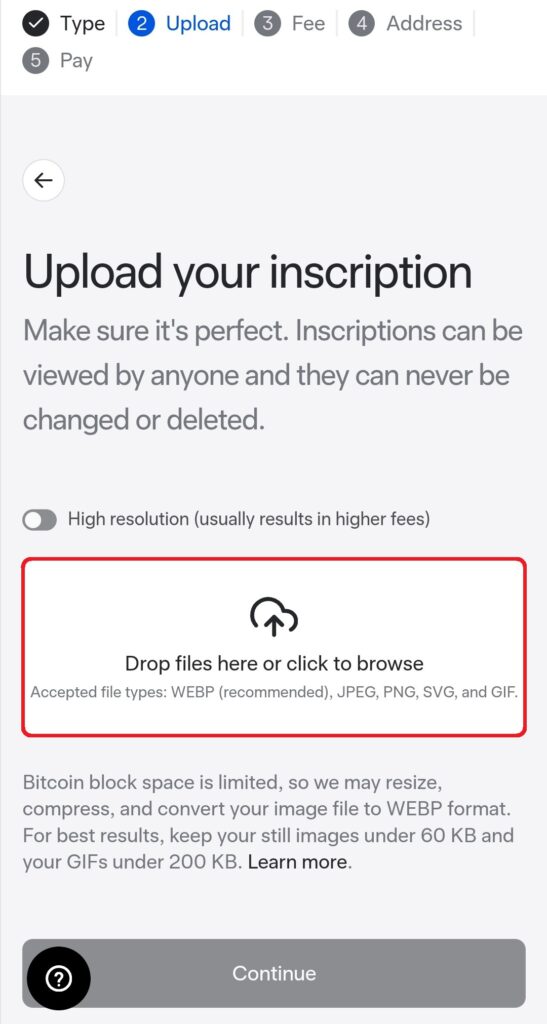
Step 8 – Now, choose the transaction fees you are willing to pay for the Bitcoin transaction which will create your NFT on-chain. The higher the fees you are willing to pay, the faster miners include your transaction in a Bitcoin block. We choose Normal fee because we are not in a hurry.
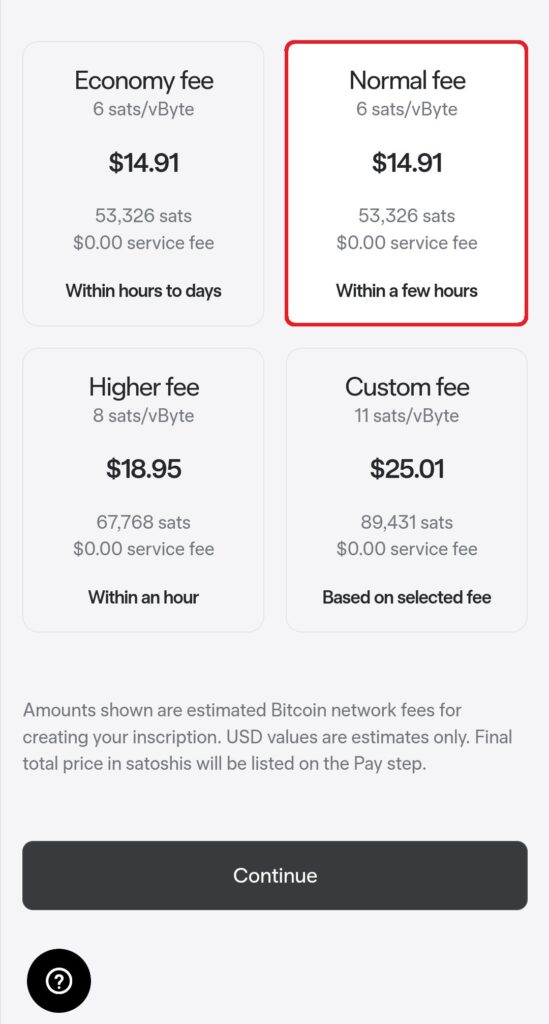
Step 9 – Here, you capture your Bitcoin address where Gamma will send your newly created Bitcoin NFT. To get your ordinals-compatibly Bitcoin address, open your Xverse wallet which you have set up in step 2, click Receive Ordinals, and copy-paste the presented Bitcoin address into the Gamma form.
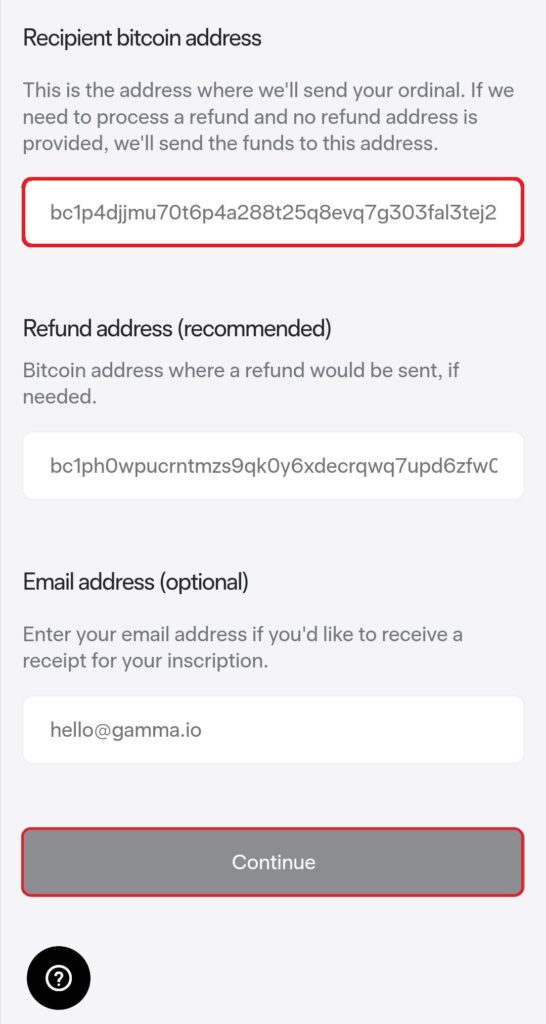
Step 10 – To complete the NFT creation process, send the required BTC amount to Gamma’s Bitcoin address as indicated in the screen below. Gamma will use this BTC amount to finance the fees for the Bitcoin transaction that creates your NFT.
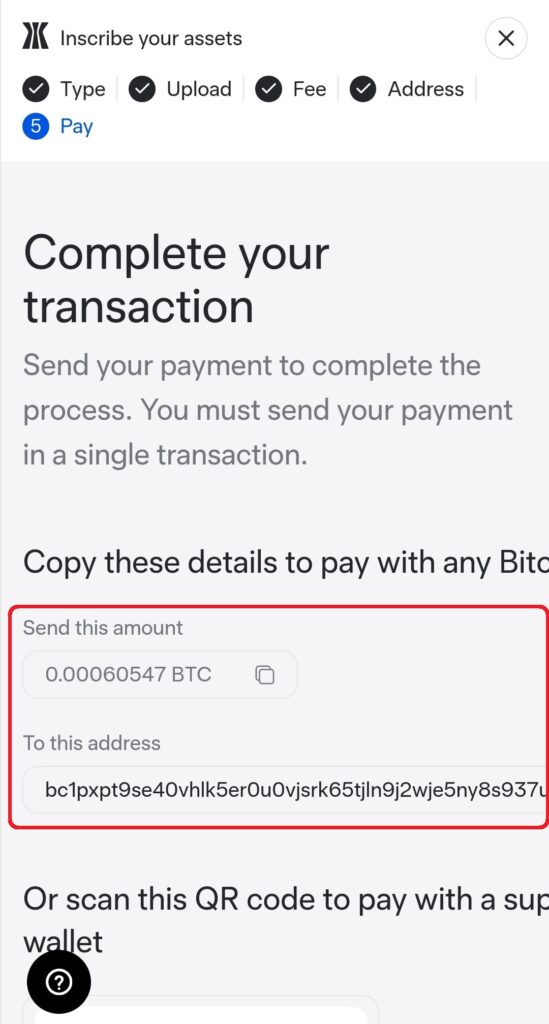
Step 11 – And that’s it. Now your image is forever stored directly on the Bitcoin blockchain. You can now check the details of the newly created NFT via the ordinals.com explorer.

Continue your journey…
Thank you for reading our Bitcoin ordinals guide to the end. To continue your Bitcoin NFT journey, we recommend the following next steps:
- 🔑 Set up your Xverse wallet
- 🚀 Try the Gamma launchpad yourself
- 📖 Check out the Ordinal Theory Handbook
- 🖼️ Read our guide to OpenSea to create NFTs on Ethereum
- 📫 Get notified about new guides
This Bitcoin ordinals guide is for general information only and does not constitute financial advice. Always do your own research before investing. See also our disclaimer.
